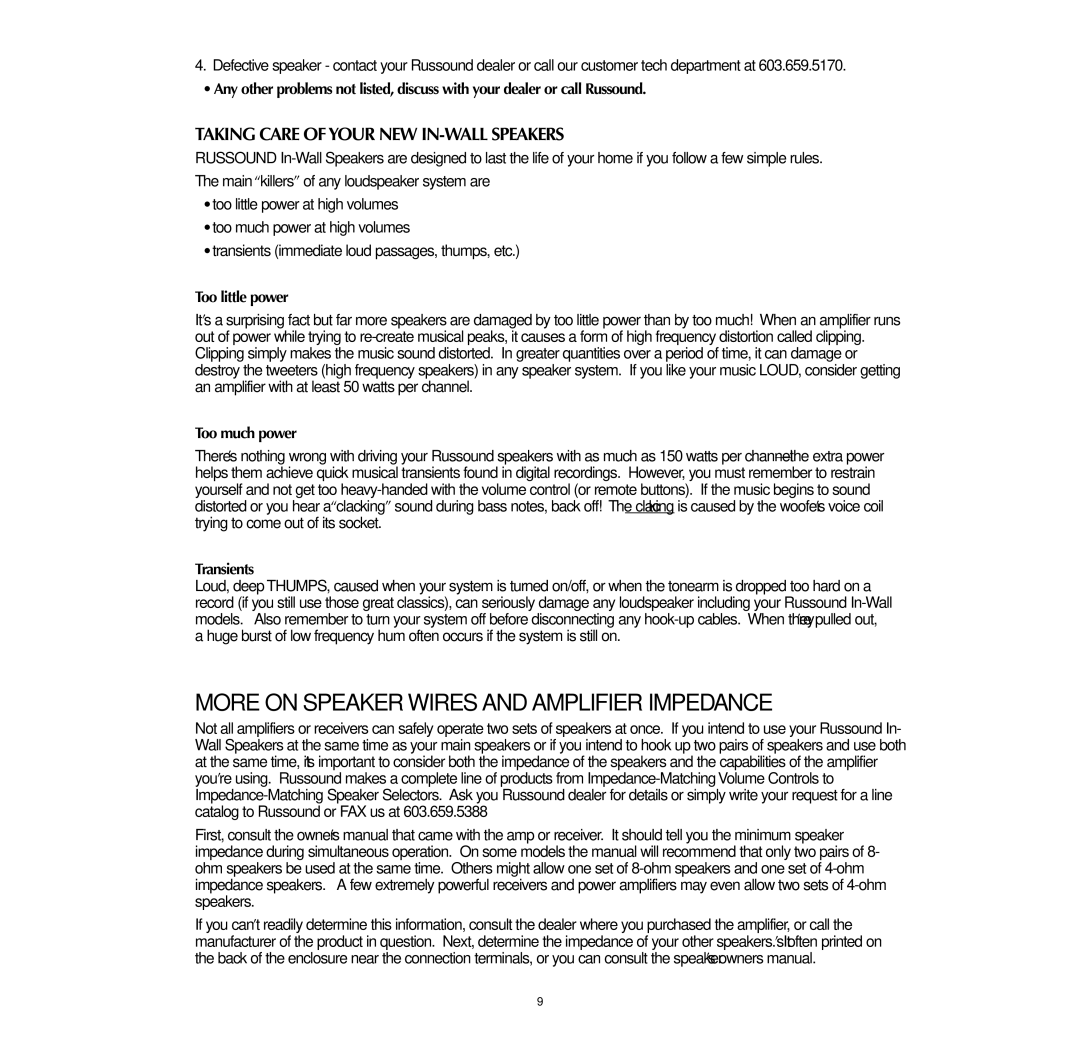4.Defective speaker - contact your Russound dealer or call our customer tech department at 603.659.5170.
•Any other problems not listed, discuss with your dealer or call Russound.
TAKING CARE OF YOUR NEW IN-WALL SPEAKERS
RUSSOUND
•too little power at high volumes
•too much power at high volumes
•transients (immediate loud passages, thumps, etc.)
Too little power
It’s a surprising fact but far more speakers are damaged by too little power than by too much! When an amplifier runs out of power while trying to
Too much power
There’s nothing wrong with driving your Russound speakers with as much as 150 watts per
Transients
Loud, deep THUMPS, caused when your system is turned on/off, or when the tonearm is dropped too hard on a record (if you still use those great classics), can seriously damage any loudspeaker including your Russound
MORE ON SPEAKER WIRES AND AMPLIFIER IMPEDANCE
Not all amplifiers or receivers can safely operate two sets of speakers at once. If you intend to use your Russound In- Wall Speakers at the same time as your main speakers or if you intend to hook up two pairs of speakers and use both at the same time, it’s important to consider both the impedance of the speakers and the capabilities of the amplifier you’re using. Russound makes a complete line of products from
First, consult the owner’s manual that came with the amp or receiver. It should tell you the minimum speaker impedance during simultaneous operation. On some models the manual will recommend that only two pairs of 8- ohm speakers be used at the same time. Others might allow one set of
If you can’t readily determine this information, consult the dealer where you purchased the amplifier, or call the manufacturer of the product in question. Next, determine the impedance of your other speakers. It’s often printed on the back of the enclosure near the connection terminals, or you can consult the speaker’s owners manual.
9
